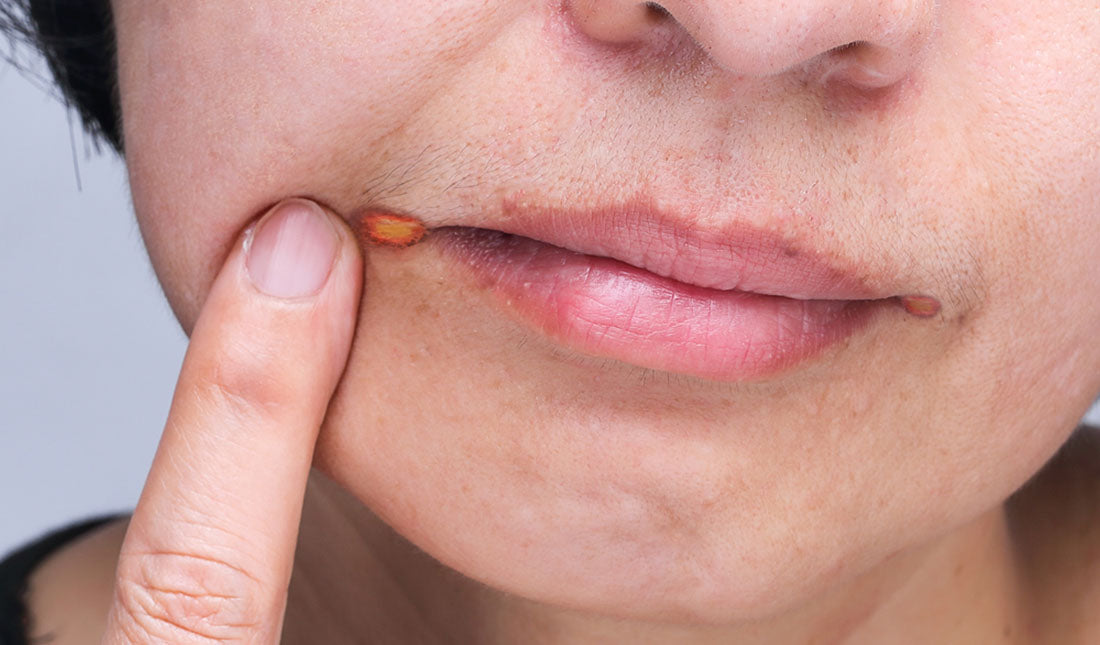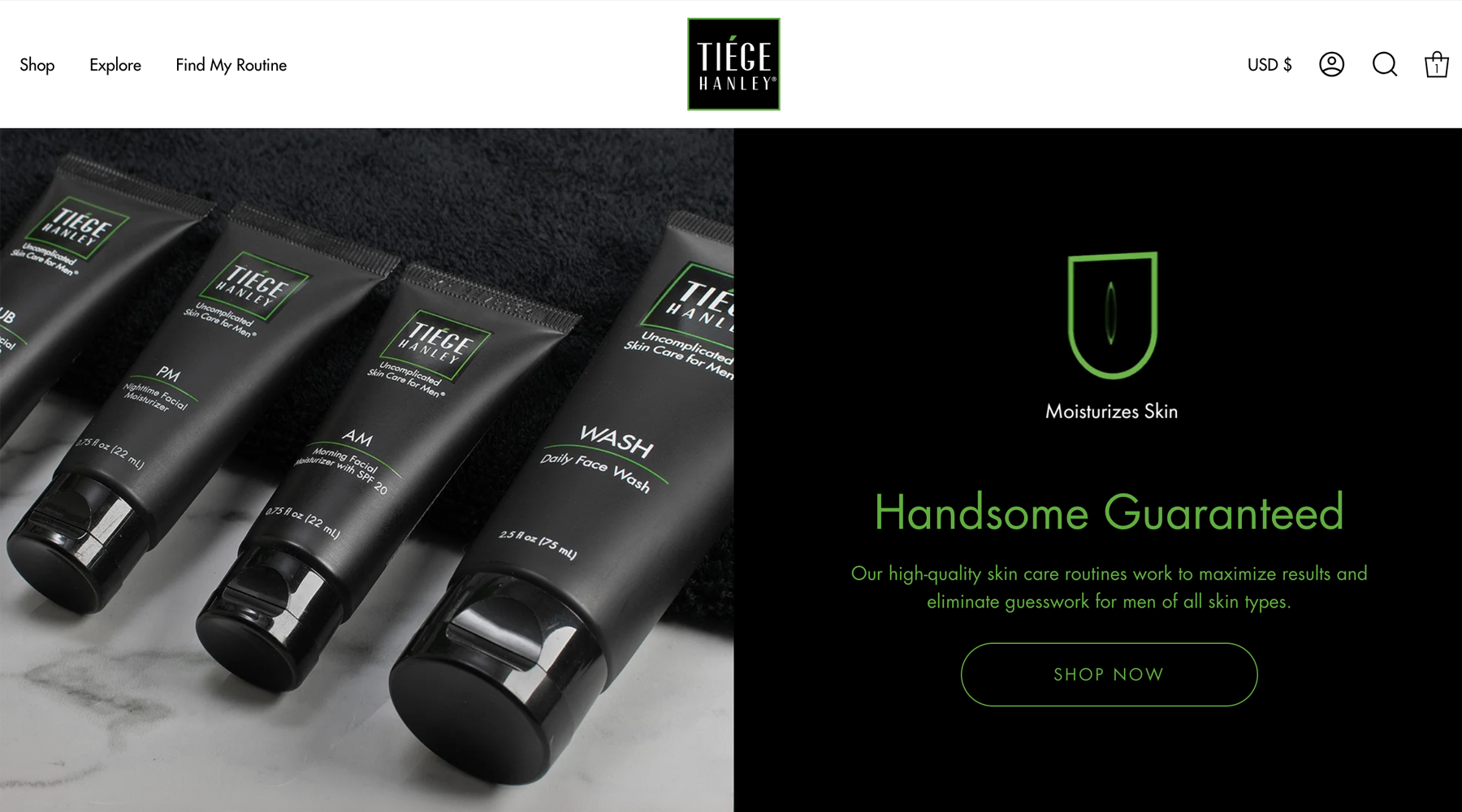Dealing with painful red patches in the corners of your mouth? It may be an inflammatory condition known as angular cheilitis.
Angular cheilitis (AC) is characterized by painful sores at one or both corners of the mouth. They’re often mistaken for cold sores (which are no fun either), but the main difference between the two is that angular cheilitis only appears at the corner of the mouth, while cold sores can pop up anywhere around the mouth.
Though angular cheilitis isn’t as common as cold sores, it’s not rare either. Before you try treating it, it helps to know a thing or two about this inflammatory condition.
Here are three things you should know about angular cheilitis:
- People with crooked teeth or who lick their lips frequently may be more likely to get angular cheilitis.
- Angular cheilitis may feel similar to a sunburn.
- The most common treatments for AC include using a lip balm and applying topical medications to the area.
Fortunately, AC is easy to treat and prevent. Below, we’ll cover six important things you ought to know about angular cheilitis below.
1. Your Saliva May Be a Factor
There are many factors believed to cause angular cheilitis, one of which is irritation caused by saliva. Human saliva contains enzymes which zap precious moisture from the thin skin on our lips, resulting in chapped lips, redness, scaling and irritation.
When lips become dry and irritated from saliva, cracks and fissures can appear at the corners of the mouth. If you have crooked teeth, breathe through your mouth or have a habit of licking your lips, you may be prone to developing angular cheilitis.
TRY MEN’S SKIN CARE2. It’s Often Caused by a Fungal Infection
One of the more common causes of angular cheilitis is infections from fungi. According to an article published in the Official Publication of The College of Family Physicians of Canada, the most common organisms associated with the condition include Candida albicans, Staphylococcus aureus and beta-hemolytic Streptococcus (see claim: “The most common etiology is infectious and includes such organisms as Candida albicans, Staphylococcus aureus, and β-hemolytic streptococci.”)

Your doctor may take a swab from the corners of your mouth for testing. When there is no known cause of angular cheilitis, it’s called idiopathic angular cheilitis.
3. There Are Several Ways to Treat Angular Cheilitis
After your doctor has discovered the underlying cause, he or she may prescribe you topical antibiotics or topical antifungals. You can also treat your AC at home by using a moisturizing lip balm regularly, which will hydrate your lips and form a protective barrier against saliva.
If you use a lip balm, make sure that you don’t share it with anyone else. Most cases of angular cheilitis are infectious!
4. It’s More Common in Sensitive Skin Types
In addition to fungi, angular cheilitis can also be caused by irritation and allergic reactions. According to a 2011 study published in Cutis, angular cheilitis is more common in people who have eczema due to the sensitive nature of their skin (see claim: “Angular cheilitis caused by irritation is especially common in patients with eczema because of their sensitive skin.”)

If you have sensitive skin, it’s especially important that any lip or skin care products you apply (such as lip balm) are made with high-quality ingredients that won’t irritate your skin. If your AC won’t go away, you may also want to consider getting allergy testing to help you avoid certain foods and products that may cause allergic reactions.
Take the skin care quiz5. It Can Feel Like a Sunburn
Patients with angular cheilitis often describe a burning sensation at the corners of their mouth. If you’ve ever experienced sunburned lips, it may feel similar.
Other symptoms may include the following:
- Open sores that may bleed
- Cracking
- Crustiness
- Dryness
- Pain and redness
- Scaly lesions
- Bad taste in the mouth
Remember, licking your lips will often make your AC worse. While some cases of AC will resolve on their own, it’s best to see a doctor and get it looked at.
6. Certain Medical Conditions May Increase Your Risk
Those with medical conditions such as diabetes, oral thrush, down syndrome and immune deficiencies are more at risk of developing angular cheilitis. Nutrient deficiencies have also been linked to AC—in particular, people with vitamin B or iron deficiencies.
If you suspect your AC is caused by a nutrient deficiency, you may want to consider talking with your doctor about taking a multivitamin for men. Filling in the gaps in your nutrition can potentially help reduce the likelihood of developing angular cheilitis and/or keep it from returning.
Bottom Line
Although angular cheilitis may be frustrating and slightly painful, it’s not a serious condition by any means. By eating a healthy diet, using a daily lip balm and ditching some bad habits, you can significantly reduce your risk of AC.








